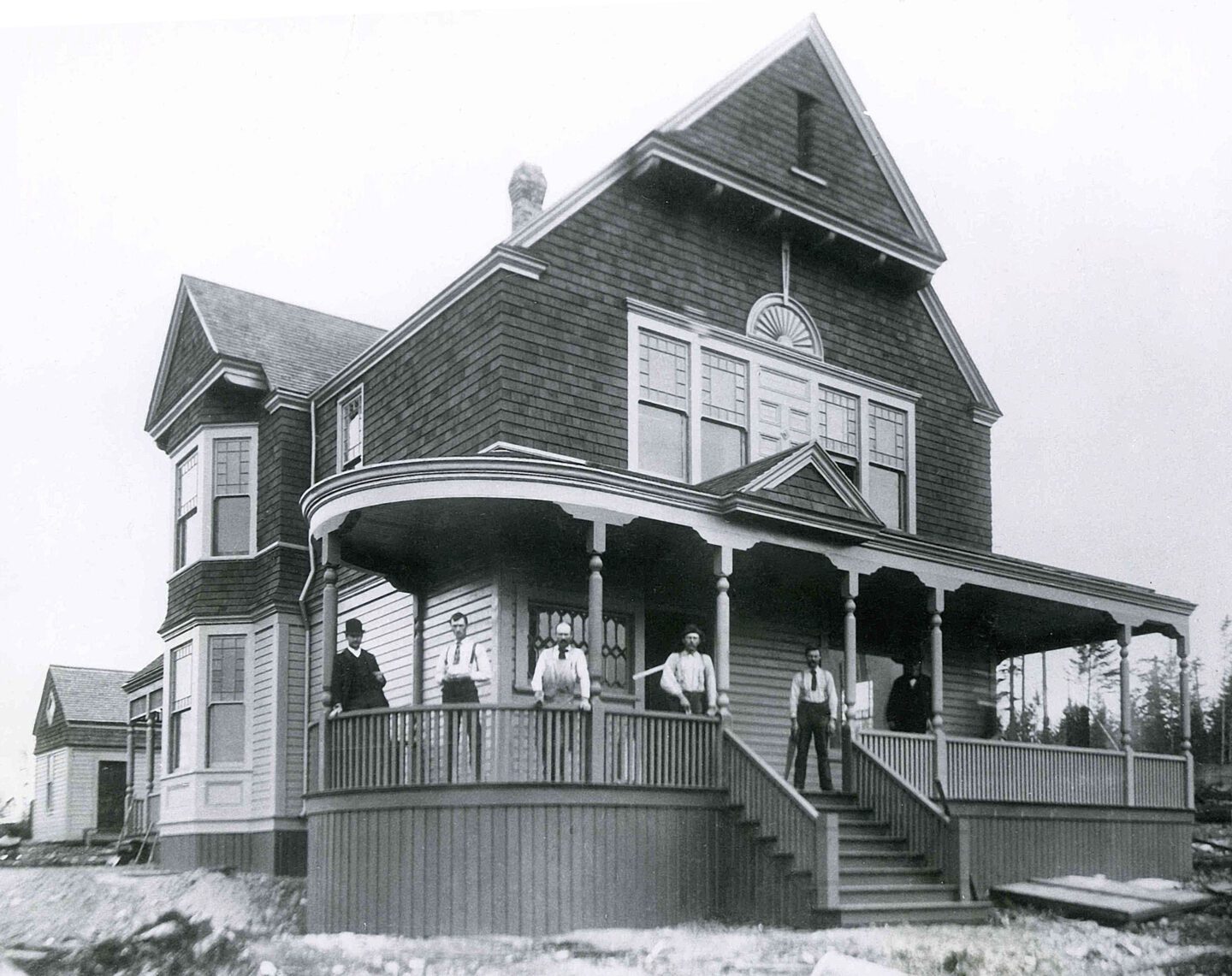-
Pine and California streets
Swalwell House, Swalwell Cottage
Walk north on Pine Street one block to California Street.
The Swalwell family, originally from Quebec, was crucial in the development of early Riverside. William G. and Effie Swalwell arrived in the area in 1887, before Hewitt’s dream of the new city. They homesteaded the land and cleared some of the large trees. The woods were so thick that the trees touched their little shack on every side. Swalwell related that he didn’t see another woman besides his wife for three months. His father George Swalwell arrived in 1889, followed by his six brothers Wellington, Alfred, Robert, John and Walter.
Their land became valuable when rumors spread that the Great Northern Railway would reach the shores at what became Everett. The family were involved in real estate, construction (building about 50 homes), and stores selling books and stationary, office supplies, drugs, art goods and jewelry.
2730 Pine – William G. and Effie J. Swalwell House (1892): Architect Frederick Sexton. William Swalwell was the eldest brother, and a major real estate operator in the early Riverside neighborhood. The Swalwells had scooped Henry Hewitt, who was in New York City promoting his idea of an industrial city. Hewitt had intended to buy up as much land in the area as possible. The Swalwells created the first plat in Everett in September, 1891, called “Swalwell’s First Addition to the City of Everett”, and in November of 1891 “Swalwell’s Second Addition”. The house with its veranda porch cost $2500. The porch has not survived.
The W. G. Swalwells ran the Swalwell Land Loan and Trust (Effie Swalwell, vice president) and the Swalwell Real Estate and Insurance Co. on Hewitt Ave in those early years.
2712 Pine – Swalwell Cottage (1891): National Register, architect Frederick Sexton. A half block farther north is possibly the oldest home left standing in Everett, built for Alfred Swalwell. He sold it to one of his brothers, who had to sell it in turn due to the Panic of 1893. In 1978 it was added to the National Register of Historic Places.
Across Pine St was the magnificent Monroe School, also designed by Frederick Sexton. Built in 1893, it was heavily damaged in an earthquake and demolished in 1965. The school district now uses the land as a bus lot.





